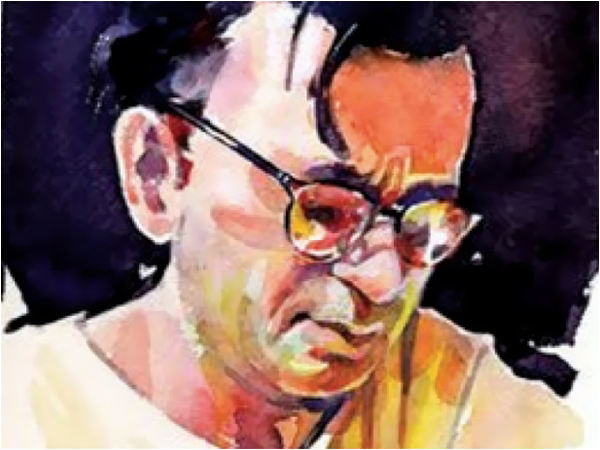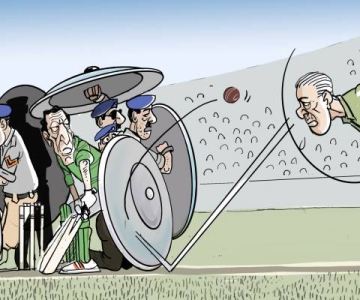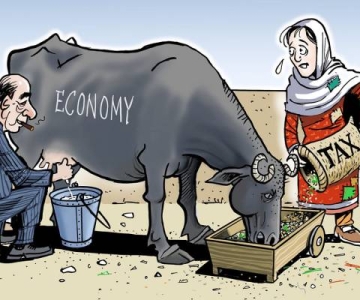Manto stands more or less alone in the position he takes on women, contends Raza Rumi, in an exploration of Manto relationship with his female protagonists
Perhaps the most well-known and also controversial Urdu writer of the twentieth century happens to be Saadat Hasan Manto. He left us with a stupendous literary output, which continues to remain relevant decades after his death. Manto, not unlike other greats died young and lived through the greatest upheaval in the Indian subcontinent i.e. the Partition. As a sensitive writer, he was influenced and traumatized by political turmoil during 1947 and beyond. His stories reflect his repeated attempts to come to terms with this cataclysmic event especially for millions in North India. For Manto, partition remained a mystery but he did not keep himself in a state of denial about it. He always used the word batwara, never partition. Manto felt that it was the ripping apart of one whole and would lead to greater divisions among the people of the subcontinent. This coming to terms with the batwara, is experienced in his works by unusual characters driven by plain ambitions, mixed emotions and above all sheer humanity.
Like Nazeer AkabarAbadi, Manto characters are universal and often it is difficult to condemn or dislike them since their humanity remains overarching. Manto raised the slogan of humanism at a time when the subcontinent presented the picture of a boiling cauldron of religious riots and protests, of acts of misogyny committed in the name of communal honour and nationalism. For example, in the story Sahai, Manto writes, Don’t say that one lakh Hindus and one lakh Muslims have died. Say that two lakh human beings have perished. Manto uses his characters as metaphors to highlight the prevalent abuse of humanity in those times.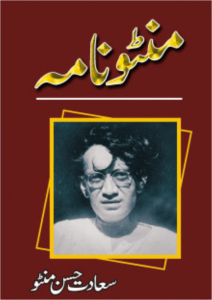
The construction and treatment of female characters by Manto turns them into complex, and sometimes ambiguous metaphors for humanity. This is why the story of suffering during 1947 is often a tale of women surviving the horrors of crimes against humanity, rescuing and salvaging life when men turn into communal butchers and not giving up even in the face of greatest adversities. Other than the Partition stories, women characters in much of Manto fiction are strong and unique contrary to the trends in Urdu fiction that patronized women and rearticulated the prevailing mores of a conservative, colonial society. Manto female characters appear as defiant and righteous, even when their circumstances are mired in taboo and social marginalization.
Women in Manto stories come from diverse backgrounds and form a clear conduit for his humanism. According to noted Urdu poet and writer Fahmida Riaz, Manto saw women the way he saw men. Like most of his characters, women exhibit a conviction that happiness does not lie in winning conflicts on religious or nationalist lines, but in fostering human ties based on feminist threads of love, care, respect and tolerance.
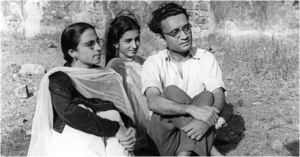
In the story Hattak (meaning insult), Saugandhi, a prostitute is awakened from her slumber late at night to attend to a client. She gets all dressed up and puts on makeup but when her Seth client meets her, he rejects her and drives away. The rejection proves devastating for Saugandhi. She gets enraged and her wrath frees her of all her illusions. She resolves to put an end to her recurring exploitation. The next day her lover visits her, a cunning man who professes love for her but actually is an extortionist who meets her for money. Saugandhi kicks him out of the house and vows to not be victimized anymore. She returns to her huge empty Sagwan bed and tries to sleep, hugging her dog, the only living creature from whom she can expect love and companionship. This is how the story ends:
This roused Saugandhi. She found herself surrounded by a terrifying silence. Never before had she experienced this sort of dead stillness in her room. Everything seemed to be empty, like a train that has been shunted into a shed after all its passengers have alighted. She had an uneasy feeling that there was a sort of vacuum sucking at her from within. She tried her best to fill this void somehow, but failed. She would crowd a number of thoughts in her head, but her mind was like a sieve. It remained empty.
For a long time, Saugandhi sat in the cane chair and could think of no way of distracting herself. Suddenly, she picked up her dog and lying down in her spacious bed, went to sleep, with the mange stricken animal in her arms. (Translation by Hamid Jalal).
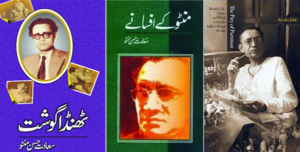

Saugandhi character is more powerful than that of many virtuous wives, a character that has the ambition and intelligence to understand her own exploitation.
Saugandhi character emerges as a self-aware woman who gets determined to put an end to exploitation and live her own life. She prefers the company of a harmless dog over continuin to bear subjugation and falsehood. In many ways, Saugandhi character is more powerful than that of many virtuous wives, a character that has the ambition and intelligence to understand her own exploitation. This is why Manto writings invited criticism from conservative readers, bigots and later the state apparatus, who were not used to such provocative portrayal of women.
Mozel, a memorable story by Manto is about a gutsy and beautiful Jewish woman, who lives in Bombay. Mozel is named after the Jewish woman in the story whose beauty Manto describes in great detail. The story proceeds to an unsettling conclusion to reveal what a women beauty is used for in society. It is set at a time of communal carnage in Bombay between the Hindu, Muslim and Sikh communities. A Sardarji falls in love with Mozel but she refuses him on the pretext of being too religious and conservative. The Sardar later gets engaged to another girl and Mozel is happy for the two future.
One day Mozel gets to know that the Sardar fianc is in danger and the religious rioters plan to attack her. She forces Sardar to disguise himself as a Muslim and makes him rush to the building where the Sikh girl is stationed. Mozel gives up her Jewish robe and asks the girl to wear it so that the two can escape the religious protestors safely. She is herself left stark naked and as she descends the building stairs, Mozel is confronted by an angry crowd of protestors. The bloodthirsty mob gets distracted and fascinated by Mozel beauty. Mozel slips her foot and comes tumbling to the ground. The beauty that Manto had praised so heavily is now reduced to shambles on the ground. As one protestor proceeds to cover her body with a sheet, Mozel shrugs it off saying: Off with it, your blasted religion. Mozel is a free-spirited woman who has control over her life. She overruns her religious leanings to save lives of two individuals of a different faith. She is intelligent, independent and far sighted unlike several men that surround her.
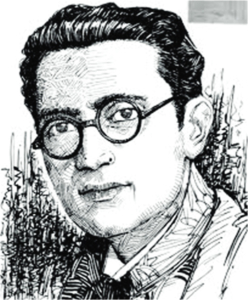
Another of Manto stories, Khol do, translated as She is alive, typifies what the traumatic partition did to ordinary people. In recounting the stories of nameless and faceless millions, Manto chooses the metaphor of a woman to highlight the gang rape of humanity that was a hallmark of 1947. This is a story of a girl abducted from East Punjab, who is finally discovered by her father in a hospital where she lies in a traumatised state, raped by her abductors as well as rescuers. The ending of the story is what makes the reader shudder at the extent of barbarity unleashed during the tumult of 1947:
The doctor glanced at the body lying on the stretcher. He felt the pulse and, pointing at the window, told Sirajuddin, Open it! Sakina body stirred ever so faintly on the stretcher. With lifeless hands, she slowly undid the knot of her waistband and lowered her shalwar. She alive! My daughter is alive! Old Sirajuddin screamed with unbounded joy.
The doctor broke into a cold sweat.
According to Khalid Hasan, Manto is said to have cited Khol-do as his greatest story.
In Dus Rupay (Ten Rupees), Manto describes the story of an innocent young girl named Sarita who works as a part-time prostitute. Grinding poverty has forced her widowed mother to send her daughter, barely in her teens, for outings with men in exchange for money. Personally, Sarita loves these adventures as they mostly involve visits to the beach and she enjoys the car rides. One day, two young boys visiting Bombay pick her up and take her to the beach. The trio enjoys as they laugh, play and sing together. Sarita has never seen such happiness before. When she is dropped back home, she returns the dus rupay or ten rupees, which she is given at the beginning of the meeting. She was used to taking money from clients in the past, but this time she had only enjoyed herself.
In describing Sarita character, Manto emphasizes her innocence and delicacy. She is playful, fun-loving and cheery, like all young girls in their teenage. The character description tends to break away from stereotypical imagery of sex-workers and the reader shares Sarita joy.
The story Sharifan comments on how violence begets violence. A Muslim father avenges the rape and murder of his daughter by committing the same atrocity on a Hindu girl, whose father then stumbles out to the house just like the Muslim father to rape a girl from another religion. Manto often ends his stories on a running note as if to suggest that violence and revenge cannot have an end and continue in a vicious cycle. In Sharifan, he begins with the Muslim father shouting his daughter name Sharifan, Sharifan, and ends with the Hindu father shouts of Bimla, Bimla.
The epic story, Thanda Gosht, translated as Colder than ice, illustrates the episode of a Sikh named Isher Singh who abducts a Muslim girl during the riots and rapes her, only to realize that she had been dead all the time. His jealous partner Kulwant Kaur, rebukes him after she finds him unable to give her sexual pleasure. She is suspicious that he has been going to bed with another woman. Isher Singh pants for breath as he narrates the chilling encounter (of attempting to rape the dead girl) that rendered him impotent. In this story, the dead Muslim girl is far more symbolic than either Singh impotence or Kaur desire.
Manto work reiterates that true morality is not silent, nor hidden under tradition, rules or a white veil of religiosity
Manto work reiterates that true morality is not silent, nor hidden under tradition, rules or a white veil of religiosity. In discussing sex workers, Manto regards them as legitimate economic workers (Khurram A Shafique in his study on Female characters of Manto has elaborated this argument). Manto rejects the idea that sex-workers lead to a rise in immorality and sees them as providing an outlet to society and essential service to the people. He, however, accepts that these workers are often underpaid and are not meted out equal respect as compared to non-workers. Intizar Hussain, the great Urdu writer has correctly noted that prostitutes, who figure prominently in his stories, are not of the Umrao Jan Ada type. Husain adds that they are downtrodden prostitutes. Manto had even said that they were his favourite characters: I accept them with all their vices, their disease, their abusiveness, their peevishness. (Daily DAWN, 6th May, 2012 issue )
Manto rejects the idea that sex-workers lead to a rise in immorality and sees them as providing an outlet to society and essential service to the people
Of relevance here is the question of feminism in his works since the notion of a feminist in the 1940s was different from that of today. Additionally, since Manto portrays the abuse to his female characters, his work redefines long held patriarchal notions of vulgarity and taboo through teaming up humanism with taboo. Here taboo is just a man-made convention that cannot stain the humanity of the character. The notion that Manto used the female as a sex exhibit needs to be discarded. Feminism has no unanimously agreed upon definition except that a feminist viewpoint emerges out of an awareness of institutional exploitation and inequality, and a willingness to do something to improve the entire system.
An insightful Urdu essay by Najma Manzoor entitled Manto, Aurat Aur Waris Alvi states: Manto artistry is such that he never preaches but continues to enlighten your mind and stir your conscience. Women have been subjected to humiliation and Manto through his stories has empathized with their plight and shown solidarity with their causethis is why we women consider him to be a mature feminist. He raised the character of a prostituteand familiarizes the reader with the humanity of women. His portrayals of domesticated women and prostitutes are unique for he associates unconventional attributes for example, determination, will, not being content in every situation and above all the ability to laugh. But Manto also showed real men who were unconventional and sensitive (Adab ki Nisai Rad-e-Tashkeel, edited by Fahmida Riaz, Feb 2006).
While the homemaker may be a paragon of conservative security, she has never been free
In Manto literary oeuvre, as Fahmida Riaz says, no two women are alike. The notion of the prostitute as the feminist works because in the subcontinental society, it was these women that could claim to be free. While the homemaker may be a paragon of conservative security, she has never been free. The sex worker is free, even though the choices she has to exercise her liberty are constrained, and constrained by the same rules that keep the homemaker freedom in check.
Sharda, a memorable story illustrates this concept. The story focuses on the physical lust of its protagonist Nazeer and the excitement he finds in infidelity. Sharda, a matter-of-fact prostitute however is more than a sex object. She turns out to be a sensitive woman capable of loving and also taking decisions. Nazeer cannot bring himself to appreciate Sharda given his patriarchal and stereotypical attitudes. But even in this state he cannot help admire attributes of women. One such passage in the story relates to Nazeer reflection on how women were endowed with the capacity to nurture and give life to children through breastfeeding. This thought comes in a state of semi-arousal. Sharda leaves Nazeer sensing his guilt (of cheating on his wife) and burden (of responding to Sharda love). However, Sharda repays him by providing his favourite brand of cigarettes when he has no money. There is a deeply ironical tone, which clearly vindicates Sharda and shows Nazeer in a poor light.
Manto stories are testaments of fallen humans who somehow end up lifting themselves and others out of darkness. Women and their stories become literary devices for Manto to reaffirm and reiterate his humanistic vision. This vision, it should be noted, is more expressly stated in the wide corpus of Manto non-fiction work that is yet to be fully appreciated.
If Manto were writing today, he would have written about the lives of those who are looked down upon and are victims of extremism in the subcontinent. The multi-religious, multi-lingual and multi-cultural societies of India and Pakistan can only salvage themselves by adhering to the principles of humanism as laid forth by Manto in his stories.
Our great feminist poet and political activist Fahmida Riaz has summed it all up: It is strange that other writers, especially in Urdu, are so blind to the reality of women. They would not even notice bravery or intelligence in their female subjects. On the contrary, they are capable of giving the most perverse psychological twist to the most remarkable traits in a woman. Even today, Manto stands more or less alone in the position that he takes on women. After Manto, there is none like Manto. (May 6, 2012, The News).
This is an abridged version of a longer essay that appeared in a special issue of Social Scientist, India, marking Manto centenary celebrations
